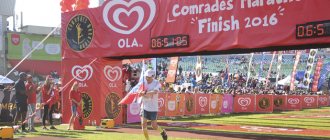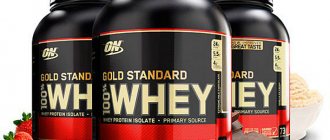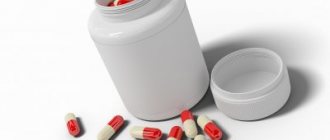Recovery phases after training
Recovery after intense training is a very complex physiological process during which the body strives to restore resources and damaged cells. If the training is carried out correctly, then the muscle tissue is not only restored, but also strengthened and increased in volume. This happens so that next time the muscles can more adequately perceive the load received.
Hypertrophy is a process that increases the volume of muscle cells. This is a natural reaction - the body strives to adapt to constant load and adapts the muscles to this. Adaptation is one of the main reasons for the development of life on Earth. Due to it, the body adapts to changing environmental conditions. And training is one of the things that the body gradually adapts to - which is why it is so important to change training programs before you adapt to the loads.
But let's talk more about recovery. Initially, the recovery phase is divided into four stages:
Rapid recovery phase. It begins immediately after the end of the load. Its duration is about half an hour. At this time, the body significantly changes its metabolism - the primary task is to restore homeostasis and energy reserves - ATP, glycogen and creatine phosphate reserves. In addition, the production of stress hormones stops, and the body begins to secrete anabolic hormones.
Slow recovery phase. As soon as the body has reached equilibrium (homeostasis), the second phase begins. It can be called the most important phase - it is at this moment that protein synthesis is activated, as well as the production of necessary amino acids, enzymes and the restoration of water and electrolyte balance. To repair damaged cells, the body begins to absorb available nutrients from the digestive system. This period is also called the protein-carbohydrate window - almost all the nutrients obtained from food will be used to restore the body’s cells.
Supercompensation. This phase begins a few days after training and lasts about five days. It is almost identical to the delayed recovery phase, however, during the supercompensation phase, the body is most prone to an increase in physiological characteristics. Simply put, the next training of a certain muscle group should occur during the supercompensation phase. In this case, you will receive a qualitative increase in muscle mass, strength and endurance.
Delayed recovery. If during the third phase you did not provide your body with the next portion of training, then the fourth phase will overtake you. It is characterized by bringing the body to its pre-training state. This means that taking too long between workouts can slow down your progress.
Sports nutrition for better post-workout recovery
At its core, sports nutrition is not much different from regular food. It is only more concentrated, and different types of additives contain a certain composition of components that are used for one purpose or another. Sports nutrition for muscle recovery after exercise is a great way to provide your body with all the nutrients it needs for faster and better recovery. In this section, we will specifically talk about the most commonly used supplements and when to use them.
Sports nutrition for recovery immediately after training
Of course, you shouldn’t put this product in a separate category, but you definitely need to talk about it. Water is the most important ingredient for good recovery. During training, profuse sweating occurs, along with which useful minerals leave the body. Therefore, it is very important to drink enough water immediately after training in order to restore the water-salt-mineral balance.
- BCAA (amino acids) are the best choice to take immediately after a workout. In general, you can take BCAA at any time, both before and after training. They have a very strong anabolic effect, helping to quickly heal the resulting microtraumas, and providing the body with the necessary building material.
- Creatine – helps restore creatine phosphate reserves in the body. In addition, the amount of free ATP directly depends on this substance, which is also very important for recovery.
- Glutamine is another amino acid needed by athletes. It is found in large quantities in muscle tissue, and its additional consumption will provide the body not only with building material, but also with an energy resource.
BCAA
Killer Labz Brute BCAA
Price: 3350.00 rub.
Card Product
Blackstone Labs ResurGence + Nootropics
Price: 2790.00 rub.
Card Product
Core Labs X Amino Power
Price: 3290.00 rub.
Card Product
Go to BCAA category »
Creatine
Controlled Labs Green Bulge
Price: 2920.00 rub.
Card Product
Go to Creatine category »
Glutamine
Sports nutrition to restore strength 20-30 minutes after training
The supplements that should be taken at the end of exercise are slightly different from those that will be discussed in this section. Immediately after training, it is important to ensure rapid and complete absorption of nutrients. This is why BCAA, creatine and glutamine are used - they have a very fast absorption rate and begin to nourish the body almost immediately after consumption.
When the slow recovery phase begins, the priorities in choosing supplements change slightly.
- Protein – ensures the supply of essential amino acids, blocks cortisol and stimulates the production of anabolic hormones. In terms of its functions, it differs from BCAA only in the speed of absorption (protein loses in this regard), and a small range of additional properties. But basically, its purpose is exactly the same - it gives the body the necessary components to restore damaged tissues.
- Gainer (Carbohydrates) – in the period from half an hour to an hour and a half after training, the body tends to use all incoming resources primarily for recovery, without storing anything in the form of fat reserves. Carbohydrates will help restore energy balance depleted after exercise.
Protein
Killer Labz Predator-Pro (Anabolic Formula!)
Price: 3255.00 rub.
Card Product
Condemned Labz Commissary Whey Protein
Price: 3060.00 rub. 2870.00 rub.
Card Product
Inspired Nutra PROTEIN+ Collagen & Probiotics
Price: 3070.00 rub.
Card Product
Go to the Protein category »
Gainer
Sports nutrition for recovery after training at night
Night is the most important time of day when it comes to recovery. At this time, the body synthesizes the maximum amount of a hormone such as somatotropin. But, there is a practice when an additional portion of growth hormone or some relaxant (with a GH booster) is taken at night. Thus, it is possible to significantly increase anabolism and accelerate the healing processes of damaged tissues.
There is one more nuance that needs to be mentioned. As a rule, athletes eat very often - about 5-6 times a day. But the problem is that during a night's rest, the body is deprived of nutrient sources for at least eight hours, which can affect anabolism. And casein protein is used for these purposes. It differs from other types of protein in that when it enters the body, it is absorbed very slowly. But it’s better to say not slowly, but continuously. By breaking down in small portions in the digestive tract, it provides a prolonged supply of nutrients, and allows you, in a sense, to eat even at night.
The Best Foods for Overnight Post-Workout Recovery
There is great news for you! Now you don’t have to figure out all the variety of sports nutrition yourself! You can use our free service - selection of sports nutrition for your goals. To do this, read the article: “How to interact with a mentor to get maximum results, and even for free!” After reading, fill out the form for selecting sports nutrition.
Now, knowing in detail all the details about the restoration of the body, you can independently choose the sports nutrition that you need. Remember - your main guideline should be knowledge about the phases of recovery of the body. By understanding this issue, you will be able to independently navigate which supplements should be taken and when.
Injections will restore muscles, skin and fat layer
1153 05 August
IMPORTANT!
The information in this section cannot be used for self-diagnosis and self-treatment. In case of pain or other exacerbation of the disease, diagnostic tests should be prescribed only by the attending physician. To make a diagnosis and properly prescribe treatment, you should contact your doctor.
Car accidents, injuries and complex surgeries sometimes result in extensive loss of soft tissue in the body that is difficult or even impossible to restore. US researchers have developed a special injectable gel reinforced with nanofibers that can restore missing muscle and connective tissue by acting as a scaffold and “bringing to the scene” the body's special cells specialized in wound healing.
So far, the research team has only tested the material on rats and rabbits. If human studies are as successful, the gel could give surgeons a quick and easy way to help patients restore lost tissue without causing widespread deformity or scarring.
“Soft tissue loss is a ubiquitous problem in clinical medicine,” says Sashank Reddy, a reconstructive surgeon at Johns Hopkins University School of Medicine in Baltimore, Maryland. Surgeons can transplant tissue from another area of the body to the site of injury. But this entails new injuries for patients and, again, tissue loss. Surgeons can insert synthetic implants, but immune cells often reject these “strangers.”
Today, gel-like fillers are already used in medicine. If the damage is very minor, surgeons inject a gel consisting of hyaluronic acid (HA), which interacts with immune cells (macrophages). When encountering HA molecules, macrophages send signals that “recruit” cells that form blood vessels and cells that help repair areas of damage. However, hyaluronic acid-based gels are generally too soft to hold their shape. Researchers have tried to strengthen them by binding gel molecules. But to make gels as strong as living tissue, you have to add too many “connections,” turning the substance into a rigid three-dimensional mesh whose pores are too small for macrophages and other cells to penetrate. Reddy and his colleagues came up with another way to strengthen hyaluronic gels. They first created nanofibers from a biodegradable polymer that had been used for decades in dissolvable sutures called polycaprolactone. They then treated the fibers so that some of them contained molecular linkers designed to bind to HA. The hours-long process formed bonds between molecular linkers and HA molecules, resulting in a gel that was as elastic as soft tissue. The gel only needed a small volume of nanofibers to become strong—meaning it still had large enough gaps between the molecules for cells to pass through easily.
To test the resulting material, Reddy and his colleagues injected the gel into experimental rabbits from which part of the fat layer had been surgically removed. First, the gel took the form of the missing tissue and strengthened, and then macrophages easily penetrated through it and “signaled” the cells that form the blood vessels. The animals were able to regenerate pieces of tissue the size of a fingertip, the researchers reported in Science Translational Medicine.
The new gel is a scientific breakthrough, says Ali Khademhosseini, a bioengineer at the University of California, Los Angeles, who was not involved in the study. He notes that, unlike other substances, this gel does not include artificial growth factors, relying on the body's own forces. The gel can also help restore soft tissue with certain functions, such as heart muscle cells. Hai-Kwan Mao, a biomaterials expert and team member at Johns Hopkins University, says the researchers hope to infuse the gel matrix with stem cells that form cardiac tissue to help repair tissue damage after a heart attack.
Source: Science, 05/06/2019
IMPORTANT!
The information in this section cannot be used for self-diagnosis and self-treatment. In case of pain or other exacerbation of the disease, diagnostic tests should be prescribed only by the attending physician. To make a diagnosis and properly prescribe treatment, you should contact your doctor.










